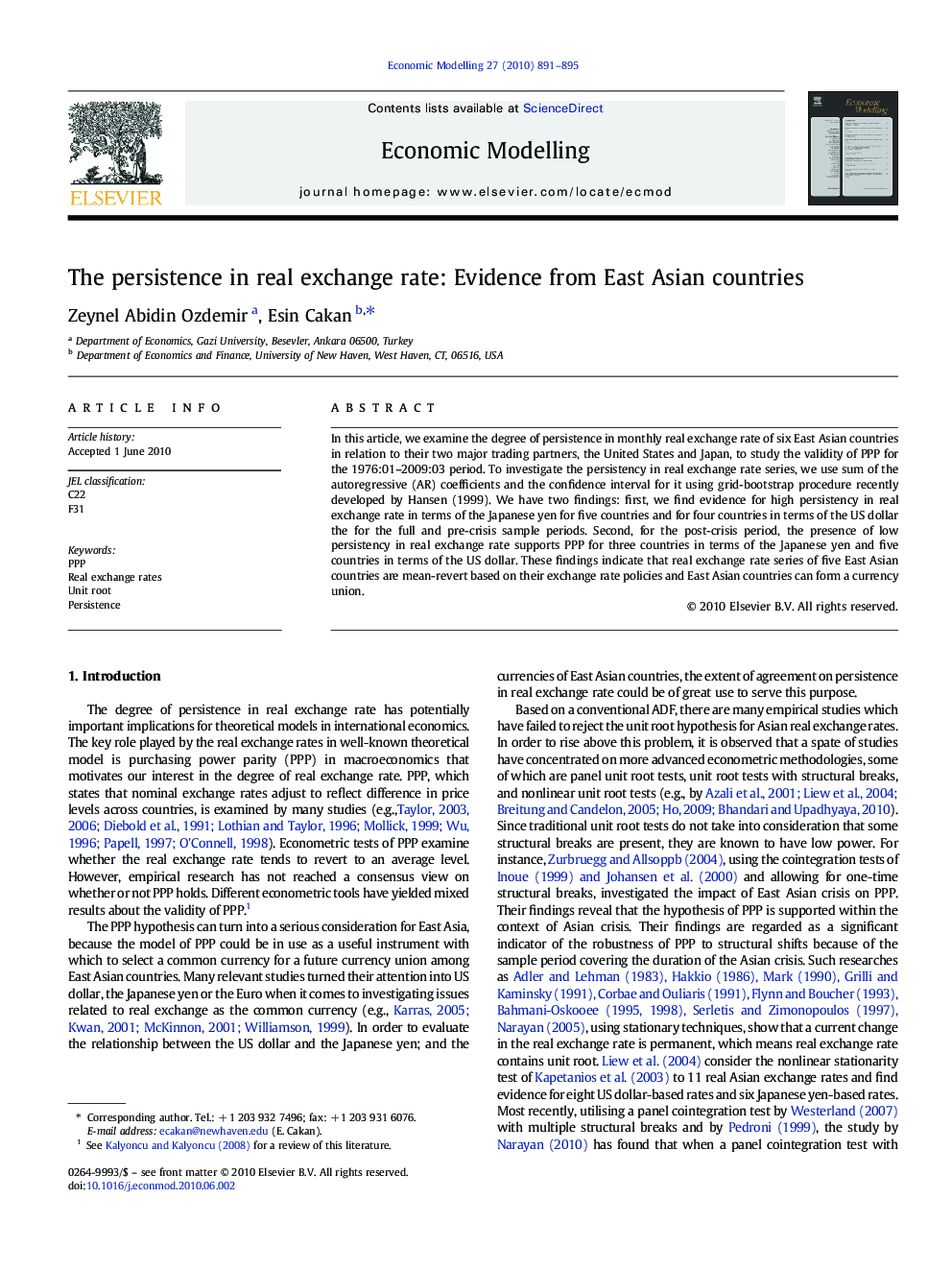| Article ID | Journal | Published Year | Pages | File Type |
|---|---|---|---|---|
| 5055220 | Economic Modelling | 2010 | 5 Pages |
In this article, we examine the degree of persistence in monthly real exchange rate of six East Asian countries in relation to their two major trading partners, the United States and Japan, to study the validity of PPP for the 1976:01-2009:03 period. To investigate the persistency in real exchange rate series, we use sum of the autoregressive (AR) coefficients and the confidence interval for it using grid-bootstrap procedure recently developed by Hansen (1999). We have two findings: first, we find evidence for high persistency in real exchange rate in terms of the Japanese yen for five countries and for four countries in terms of the US dollar the for the full and pre-crisis sample periods. Second, for the post-crisis period, the presence of low persistency in real exchange rate supports PPP for three countries in terms of the Japanese yen and five countries in terms of the US dollar. These findings indicate that real exchange rate series of five East Asian countries are mean-revert based on their exchange rate policies and East Asian countries can form a currency union.
